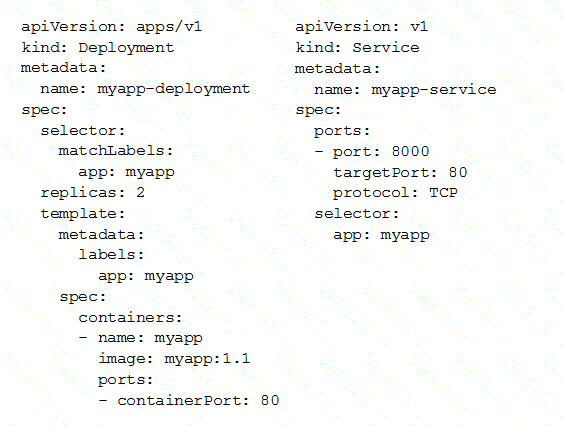Associate-Cloud-Engineer Exam Dumps - Google Cloud Certified - Associate Cloud Engineer
Searching for workable clues to ace the Google Associate-Cloud-Engineer Exam? You’re on the right place! ExamCert has realistic, trusted and authentic exam prep tools to help you achieve your desired credential. ExamCert’s Associate-Cloud-Engineer PDF Study Guide, Testing Engine and Exam Dumps follow a reliable exam preparation strategy, providing you the most relevant and updated study material that is crafted in an easy to learn format of questions and answers. ExamCert’s study tools aim at simplifying all complex and confusing concepts of the exam and introduce you to the real exam scenario and practice it with the help of its testing engine and real exam dumps
You recently discovered an issue with your rolling update in Google Kubernetes Engine (GKE). You now need to roll back a rolling update. What should you do?
Your company has a Google Cloud Platform project that uses BigQuery for data warehousing. Your data science team changes frequently and has few members. You need to allow members of this team to perform queries. You want to follow Google-recommended practices. What should you do?
You have production and test workloads that you want to deploy on Compute Engine. Production VMs need to be in a different subnet than the test VMs. All the VMs must be able to reach each other over internal IP without creating additional routes. You need to set up VPC and the 2 subnets. Which configuration meets these requirements?
You deployed a new application inside your Google Kubernetes Engine cluster using the YAML file specified below.

You check the status of the deployed pods and notice that one of them is still in PENDING status:

You want to find out why the pod is stuck in pending status. What should you do?
A colleague handed over a Google Cloud Platform project for you to maintain. As part of a security checkup, you want to review who has been granted the Project Owner role. What should you do?
Your company uses BigQuery to store and analyze data. Upon submitting your query in BigQuery, the query fails with a quotaExceeded error. You need to diagnose the issue causing the error. What should you do?
Choose 2 answers
You have an application that runs on Compute Engine VM instances in a custom Virtual Private Cloud (VPC). Your company's security policies only allow the use to internal IP addresses on VM instances and do not let VM instances connect to the internet. You need to ensure that the application can access a file hosted in a Cloud Storage bucket within your project. What should you do?
You deployed an LDAP server on Compute Engine that is reachable via TLS through port 636 using UDP. You want to make sure it is reachable by clients over that port. What should you do?